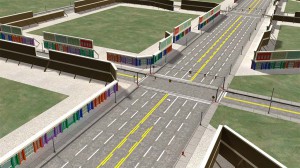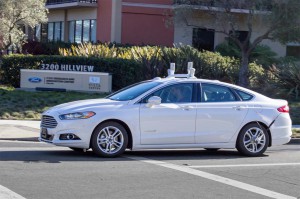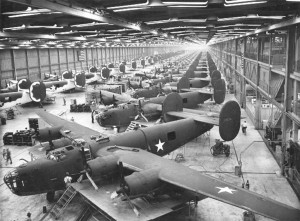It served as a key part of the Arsenal of Democracy during World War II, but the site of the old Willow Run Assembly Plant, just outside Detroit, could come back to life as part of the auto industry’s future.
The newly established American Center for Mobility aims to transform more than 300 acres of the tract into the country’s largest test center dedicated to the development of autonomous vehicles. Until now, most of the research on self-driving cars has taken place in California and other warm-weather states. The ACM would allow automakers and suppliers to test their technology in a broader range of climactic conditions.
A number of steps have to fall in place before the project can come together – with a goal set to begin testing at the suburban site sometime in 2018. But one key move was approved last week when the Michigan Economic Development Corp. approved the purchase of the property for $1.2 million.
The ACM project is expected to cost $80 million by the time it opens, with organizers hoping about $60 million will come from federal grants. But the project’s CEO John Maddox told reporters last week that “a lot (remains) up in the air.”
Once farmland in the then-rural suburb of Ypsilanti, Michigan, the Willow Run facility was built by Ford in 1941 and soon converted to a heavy bomber plant. It was a manufacturing wonder during the War, rolling out nearly half of the B-24 Liberators produced through May 1945, nearly one an hour.
After bomber production ended, Ford walked away from the facility and it was briefly used by the short-lived Kaiser-Frazer Corp. before being sold to General Motors in 1953. GM ran two factories on the property, a transmission line and a vehicle assembly plant, shutting down the last of the operations in 2010.
The old airport continues to be used, primarily for cargo flights, and a portion of one old GM plant is being converted into the permanent home of the Yankee Air Museum. But most of the site has been abandoned for years.
(Two crumbling Michigan relics of the World War II fight could find new life. Click Here for more.)
It would get a new life if the ACM project pans out. The auto industry is working fast to develop self-driving vehicles, some proponents forecasting the first generation of those products will be in production by the beginning of the next decade.
But experts caution there are a lot of obstacles yet to overcome – as has become apparent in recent months in the wake of a series of minor crashes involving Google autonomous vehicle prototypes and the fatal, May 9th crash of a Tesla Model S sedan running in semi-autonomous Autopilot mode on a highway in Florida.
(GM delays rollout of semi-autonomous SuperCruise as makers respond to Tesla crash. Click Here for the latest.)
Experts caution that most of the research, to date, on self-driving vehicles has been done in relatively benign climates, in places like Silicon Valley and Phoenix. The real challenge will be to get the technology to work in more adverse environments, such as a Michigan winter.
Some testing has already begun in the state. Detroit’s Big Three automakers own their own Michigan test tracks, as do some other car companies and suppliers, including Toyota. And, in 2015, the University of Michigan opened its 32-acre MCity complex in the university town of Ann Arbor. At nearly 10 times the size, the American Center for Mobility would allow researchers to better simulate real-world conditions, backers have suggested.
It would also allow manufacturers and government officials to work together on some projects. Last January, the National Highway Traffic Safety Administration announced a joint industry/government consortium aimed at speeding to market new safety technologies – including both vehicle-to-vehicle communications and autonomous driving systems.
NHTSA Administrator Mark Rosekind last Friday confirmed the agency is on track to announcing the first national guidelines for autonomous vehicles by the end of the summer despite calls to slow down development in the wake of the fatal Tesla crash.
“We cannot wait for the perfect,” Rosekind said during an appearance in Detroit. “We’ve got to move forward,” he stressed, pointing out that the number of lives lost in U.S. highway crashes rose 8% last year after a decade of decline. “We will lose too many lives waiting for perfect.”
The Obama Administration is seeking $4 billion in funding for autonomous vehicle research, though it is unsure whether any action will take place in Congress before the November presidential election. Nonetheless, NHTSA expects to select one or more possible test centers.
Several other possibilities are under consideration, including the Center for Advanced Automotive Research at Virginia Tech, in Blacksburg, Virginia, and the former Honda test track in East Liberty, Ohio, known as the Transportation Research Center. But because of its proximity to not only the Detroit automakers but a number for foreign-owned makers and a broad collection of auto suppliers, the Willow Run project is thought to have a strong shot at winning the federal money.
(Automakers can’t sacrifice safety in rush for autonomous vehicles, cautions US Transportation Sec. Foxx. Click Here for the story.)




